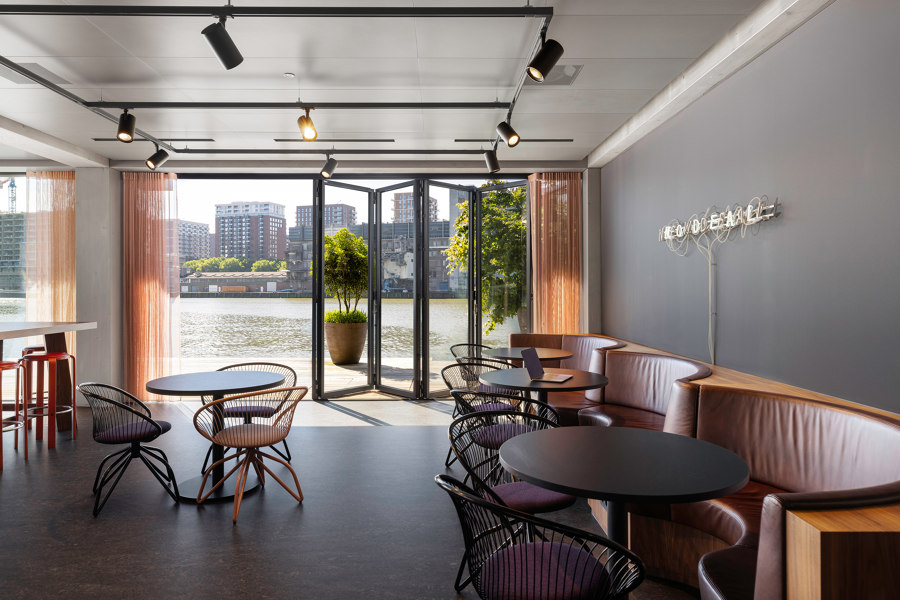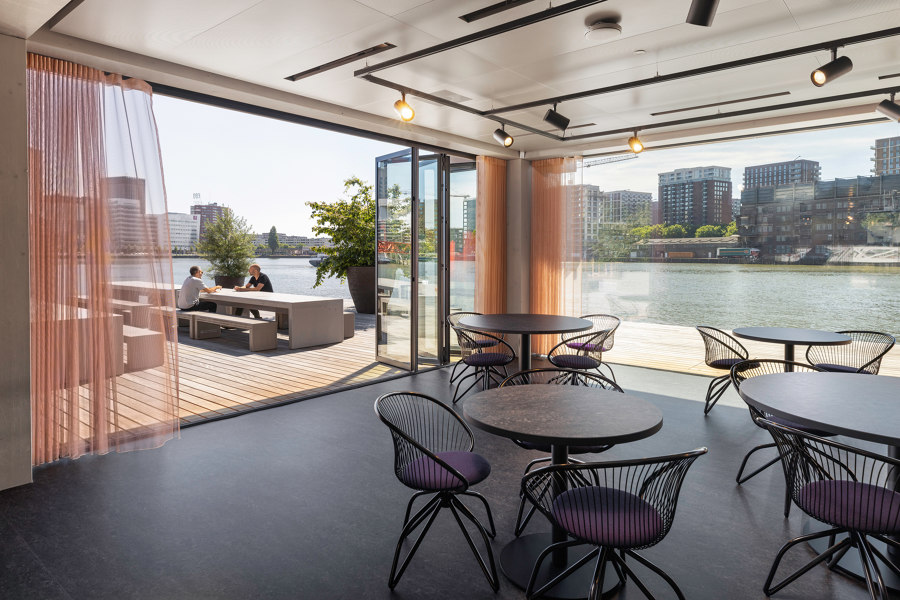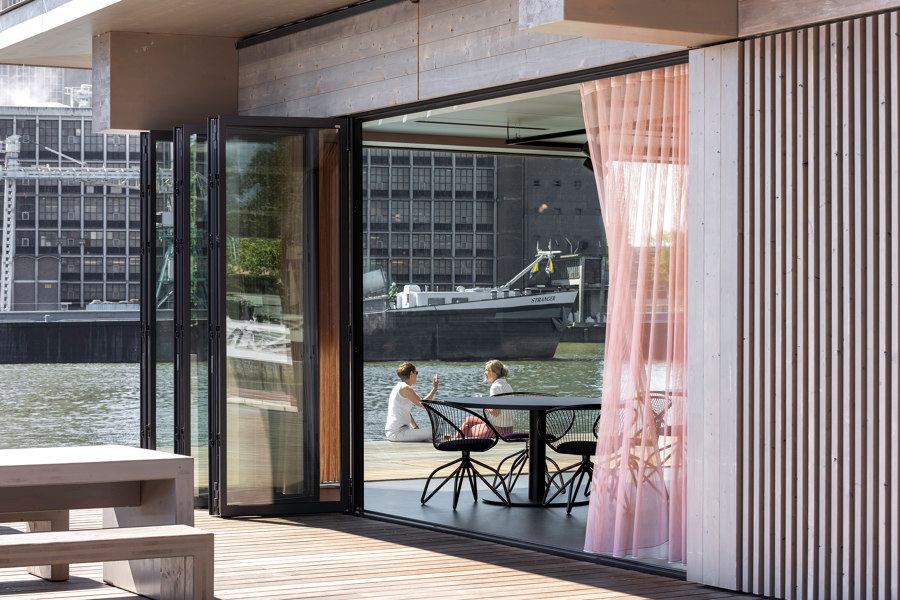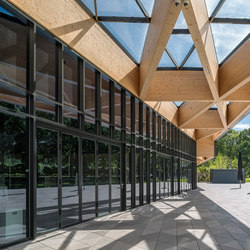
Fotógrafo: Prachtt Fotografie
Tomorrow’s building today
The Floating Office Rotterdam (FOR) designed by Dutch architects’ bureau Powerhouse Company reflects the values of its user – the Global Center on Adaptation (GCA), an NGO that develops solu-tions for adapting to climate change. The FOR provides 3,600 square metres of space for offices, a restaurant and an outdoor pool. Alongside the Global Center on Adaptation (GCA) a number of other businesses have acquired office space in the FOR, including the architects’ bureau responsible for the project, Powerhouse Company, and its property developer, RED Company.
Energy-positive, carbon-negative
The climate-resistant wooden building generates more energy that it needs to cover its own demands, and it also boasts a negative car-bon footprint thanks to the emissions-friendly materials used in its construction. The building can be taken down and rebuilt at a new location at any time, or even recycled. The ground-breaking design combines high-tech solutions – like the water cooling system and solar collectors – with low-tech construction measures such as a pitched roof with an overhang and protruding balconies for extra shade. The floating foundation, which comprises 15 concrete pon-toons, also acts as a as the three-storey building’s own heat ex-changer system, utilising water from the surrounding harbour. A photovoltaic system on the south side of the roof makes the floating office an energy-positive building, and the modular wooden struc-ture – most of which is prefabricated – is carbon-negative. This wooden structure is based on a 6x6-metre grid and comprises hefty laminated beams with cross-laminated timber ceilings and walls for extra rigidity.
Bi-folding doors for an increased sense of space
The accessible bi-folding doors of Solarlux’s Highline system, which offers excellent thermal insulation, can be opened across their en-tire width to provide access to the outdoor patios. The seven ele-ments, each of which is almost a metre wide, can be folded up along the almost six-metre track to create a compact bundle, which can then be parked out of the way at the side of the opening. With their slender frames (sight line in panel butt joint: just 99 mm) and large glass surfaces, they are extremely elegant, offering almost completely unobstructed views even when closed.
The FOR generates an average of 154 Mwh of electricity per year – enough to power 54 households for a year. The building has a neg-ative energy efficiency value of E/E = -0.12 – meaning that the vol-ume of energy the building generates in one year is more than that required for its own heating, cooling and ventilation.
Architect
RED Company

Fotógrafo: Prachtt Fotografie

Fotógrafo: Prachtt Fotografie

Fotógrafo: Prachtt Fotografie

Fotógrafo: Prachtt Fotografie






